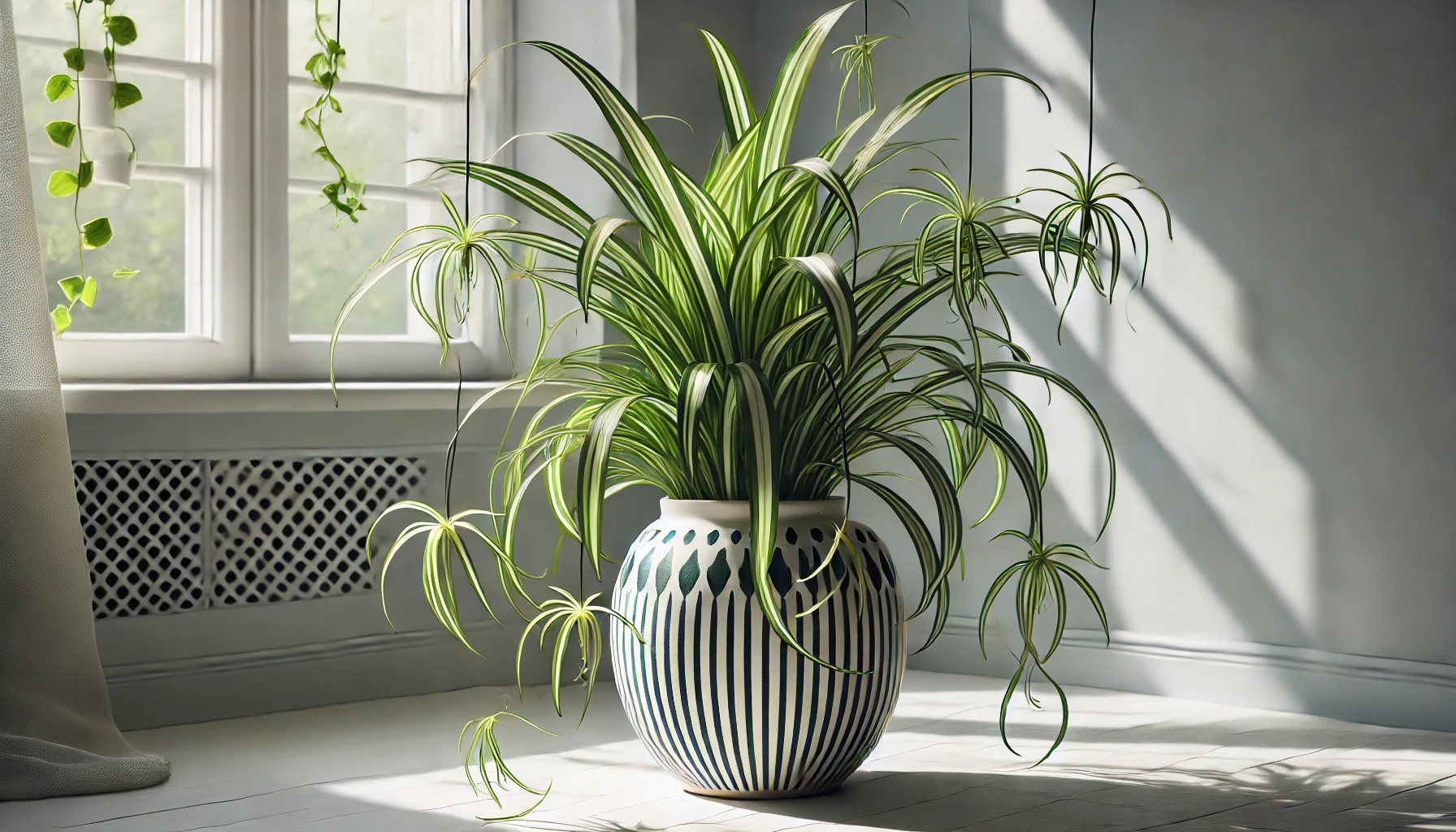
The Spider Plant, known scientifically as Chlorophytum comosum, is a charming and easy-to-care-for houseplant. With its arching leaves that are often variegated with green and white stripes, and its ability to produce baby plants (spiderettes) that dangle from the mother plant, it adds a lively touch to any space. Spider Plants typically grow to about 12 to 24 inches tall and wide. The spiderettes can extend even further, adding an additional 12 to 24 inches, creating a beautiful cascading effect.
Native to South Africa, the Spider Plant has been a popular houseplant around the world since the Victorian era. Its ease of care and unique appearance have made it a favorite in homes and offices for over a century. Spider Plants thrive in a variety of conditions, making them extremely versatile. They can adapt to different light levels and temperatures, making them ideal for almost any indoor environment. Good news for pet owners: the Spider Plant is non-toxic to cats and dogs. You can enjoy its beauty without worrying about your furry friends’ safety.
Best Practices for Spider Plant Care
To keep your Spider Plant healthy and vibrant, it’s important to know the best practices for its care. Spider Plants prefer to be kept evenly moist but not soggy. Water them thoroughly when the top inch of soil feels dry. They also enjoy higher humidity levels, so occasional misting or placing them in a more humid room can help them thrive. A well-draining potting mix is ideal for Spider Plants. They do well in bright, indirect light but can also tolerate lower light levels. However, they should be kept out of direct sunlight to prevent leaf burn. Spider Plants prefer temperatures between 55°F and 80°F, making them comfortable in most indoor environments.
Common Problems and Remedies
Even with the best care, sometimes Spider Plants can run into issues. Brown tips on the leaves can be caused by a variety of factors, including fluoride in tap water, dry air, or inconsistent watering. To remedy this, use distilled or rainwater for watering, increase humidity levels, and ensure a consistent watering schedule. Spider Plants can occasionally be affected by pests such as aphids, spider mites, and scale. Treat these pests with a mild soap solution or neem oil spray to keep your plant healthy. Overwatering can lead to root rot. If you notice yellowing leaves and a mushy base, remove the plant from its pot, trim any rotten roots, and repot it in fresh, well-draining soil.
Propagation and Uses
Spider Plants are incredibly easy to propagate. Simply cut off the spiderettes and place them in water or soil to root. Before long, you’ll have new plants to share with friends or expand your indoor garden. Spider Plants are known for their air-purifying qualities. They can help remove toxins such as formaldehyde and xylene from the air, making them a healthy addition to your home or office.
Final Thoughts
Spider Plants are one of the easiest plants to care for. They are resilient and can bounce back from neglect, making them perfect for both novice and experienced plant owners. Their ability to thrive in a variety of conditions and their charming appearance make them a popular choice. The Spider Plant is more than just an attractive houseplant; it’s a green companion that’s easy to care for and benefits your living space. With its cascading leaves and air-purifying abilities, it’s no wonder the Spider Plant has been a favorite for generations. Give it a little love, and it will reward you with its lively presence and vibrant spiderettes. So, why not add a Spider Plant to your home and enjoy the lush, green benefits it brings?
Stay connected with the world of plants! Subscribe to Phylofy for expert gardening tips, DIY projects, and eco-friendly inspiration. Join our community and nurture your love for nature. Don’t miss exclusive content and updates. Subscribe now!



